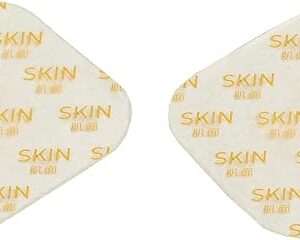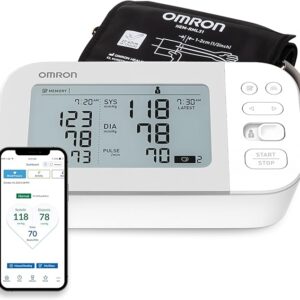Description
The Omron E3S-AT16 is a Through-Beam Photoelectric Switch designed for industrial automation applications. It uses red LED light (700nm) for detection and offers a 7-meter sensing distance. The sensor features a M12 connector for easy integration into systems and provides both Light-ON/Dark-ON selectable modes, making it versatile for different use cases.
Key Specifications:
- Model: E3S-AT16
- Type: Photoelectric Sensor (Through-Beam Type)
- Sensing Distance: 7 meters
- Output Type: NPN (Sinking)
- Operating Voltage: 10–30 VDC
- Output Current: Max. 100mA
- Connector Type: M12 (for easy connection)
- Light Type: Red LED (700nm)
- Switching Mode: Selectable Light-ON/Dark-ON
- Response Time: 1ms (fast response)
- Protection Rating: IP67 (dustproof and waterproof)
- Temperature Range: -25°C to +55°C
- Mounting: Through-beam (requires emitter and receiver pair)
Pros:
- Long Sensing Distance (7 Meters):
- With a 7-meter sensing distance, this sensor is well-suited for applications that need to detect objects over a relatively long range. This makes it a great choice for larger machines or conveyor systems where you need to monitor objects at a distance.
- Selectable Light-ON/Dark-ON Modes:
- The Light-ON/Dark-ON selectable switching mode provides flexibility. You can configure the sensor to either output when the light beam is interrupted (Dark-ON mode) or when the light beam is received (Light-ON mode), depending on the application’s needs.
- M12 Connector:
- The M12 connector offers a reliable and standardized method of connection, simplifying installation and ensuring stable electrical connections. It also provides better mechanical strength and vibration resistance compared to traditional terminal block connections.
- IP67 Protection Rating:
- The IP67 rating ensures the sensor is dustproof and waterproof, making it suitable for use in harsh industrial environments where dust, moisture, or occasional water splashes are common. It also helps ensure the sensor’s long-term reliability in such conditions.
- Red LED (700nm) Light:
- The use of a red LED light (700nm) is effective for a variety of industrial applications. Red light is easily visible, making it easier for operators to visually check the alignment and function of the sensor, especially in low-light environments.
- Fast Response Time (1ms):
- The 1ms response time makes it suitable for high-speed operations where rapid detection is required, such as on automated production lines or for controlling high-speed machinery.
- Wide Operating Voltage (10-30 VDC):
- The sensor operates within a 10-30 VDC voltage range, making it compatible with most industrial control systems and power supplies. This wide operating voltage range adds flexibility to its use in a variety of setups.
- Durability and Reliability:
- The through-beam type design, combined with an IP67 rating and red LED light, ensures a long service life and reliable performance in a wide variety of industrial environments. It’s resistant to physical wear, corrosion, and environmental stress.
- Versatile for Various Applications:
- This sensor can be used in many types of automation and safety systems, including detection of objects, vehicle counting, material handling systems, and more. Its long sensing range and flexible output modes make it adaptable for many different tasks.
Cons:
- Requires Emitter and Receiver Pair:
- Since this is a through-beam type sensor, it requires both a separate emitter and receiver unit to operate. This adds complexity to the setup, as you need to align both components correctly over the distance to ensure proper detection. If the emitter and receiver are misaligned, the sensor will not work as intended.
- NPN Output Only:
- The NPN (sinking) output may not be compatible with systems that require PNP (sourcing) outputs. If your automation system is designed for PNP inputs, you’ll need an additional interface or a different sensor with a PNP output.
- Limited Detection for Non-Metallic Objects:
- The sensor is designed for light-based detection, which works well with most opaque or reflective objects. However, transparent or highly reflective objects may pose a challenge and result in unreliable detection. For such objects, a different sensor type (like a diffuse or laser sensor) may be needed.
- Installation Complexity:
- Proper installation of the through-beam system can be more complicated than other types of photoelectric sensors. The emitter and receiver need to be mounted in a precise alignment with one another. If there’s any misalignment or obstruction between them, the system won’t function.
- Not Suitable for Harsh Outdoor Environments:
- While the IP67 rating makes this sensor suitable for most industrial environments, it may not be ideal for extreme outdoor conditions with direct exposure to rain, snow, or heavy environmental contamination. For those situations, a more rugged IP68 or higher rated sensor would be recommended.
- Single Detection Mode:
- The sensor only provides a binary output (object detected or not detected), meaning it doesn’t offer more detailed information like the distance or size of the object detected. If your application requires more precise or nuanced detection feedback, you’ll need a more advanced sensor.
- Temperature Limitations:
- The operating temperature range of -25°C to +55°C is adequate for most indoor industrial applications. However, for environments with extreme cold or heat outside of this range, the sensor may not function properly or could experience a shorter lifespan.
- Not Immune to Optical Interference:
- The red LED light (700nm) can sometimes be affected by ambient light or other optical interference, especially if the sensor is installed in an environment with fluctuating or bright lighting. Careful positioning and shielding may be needed to prevent false triggering.
Questions to Consider:
- Do you need a long-range detection solution?
- If you need to detect objects over long distances (up to 7 meters), this sensor is well-suited for that. However, if your application requires even longer detection, you may need a different sensor with extended sensing capabilities.
- Is your system designed for NPN or PNP inputs?
- The E3S-AT16 uses an NPN (sinking) output. If your system uses PNP (sourcing) outputs, you’ll either need to use a conversion module or look for a PNP-compatible sensor.
- Can you install both an emitter and a receiver?
- This is a through-beam sensor, meaning you’ll need to install both an emitter and a receiver at a precise distance from each other. Make sure you have the space and ability to align both components accurately to avoid misalignment and false readings.
- What kind of objects are you detecting?
- The sensor works well for detecting opaque objects but might struggle with transparent or highly reflective materials. If your application involves detecting such materials, you may need a different sensor technology, such as laser sensors or diffuse-reflective sensors.
- Are environmental conditions a concern?
- The IP67 rating provides protection against dust and water, but for extreme environments with direct exposure to harsh conditions (like heavy rain or chemicals), you might want a higher protection rating (IP68 or above) for increased durability.
Summary:
The Omron E3S-AT16 is an excellent through-beam photoelectric sensor with 7-meter sensing distance, NPN output, and a selectable Light-ON/Dark-ON switching mode, making it ideal for industrial automation systems. Its IP67 rating, red LED light, and M12 connector make it both durable and easy to install in harsh environments.
However, it does come with limitations such as requiring both an emitter and receiver, having an NPN output only, and being less suitable for environments with extreme weather or transparent materials. It is well-suited for applications requiring long-range detection of opaque objects in relatively controlled environments.
If you’re looking for reliable, long-range detection in an industrial setting, the E3S-AT16 could be a solid choice. Would you like further information on installation or integrating this sensor into a system? Or perhaps you’d like help with other sensor types for different use cases?




Reviews
There are no reviews yet.